How to Reduce Overtime and Labor Costs in Call Centers
In this article, you will learn about How to Reduce Overtime & Labor Costs in Call Centers? Discover 9 proven strategies to optimize labor expenses and boost efficiency in your call center.
5 min read
How to reduce overtime & labor costs in Call Centers? If you’re a CXO, HR manager, or operations manager in a call center, this question has probably crossed your mind more than once.
Operating a call center can be incredibly demanding, both financially and operationally. Overtime costs and labor expenses can quickly add up, impacting your bottom line. Understanding how to manage these costs is crucial for maintaining profitability and operational efficiency.
According to Gallup, about 23% of employees report feeling burned out at work very often or always, largely due to excessive workloads and overtime. This is particularly true in the call center industry, where employees may have to deal with demanding clients, high call volumes, and stringent performance metrics.
It’s not just about the money—a burned-out employee is less productive, less engaged, and more likely to quit. So, finding ways to reduce overtime and labor costs isn’t just a financial necessity; it’s also critical for employee retention and satisfaction.
In this blog post, we’ll delve into actionable strategies to help you optimize labor costs and reduce overtime in your call center.
From implementing flexible schedules to investing in technology, these tips are designed to create a more efficient and happier work environment.

1. Implement Flexible Scheduling to Reduce Overtime Cost
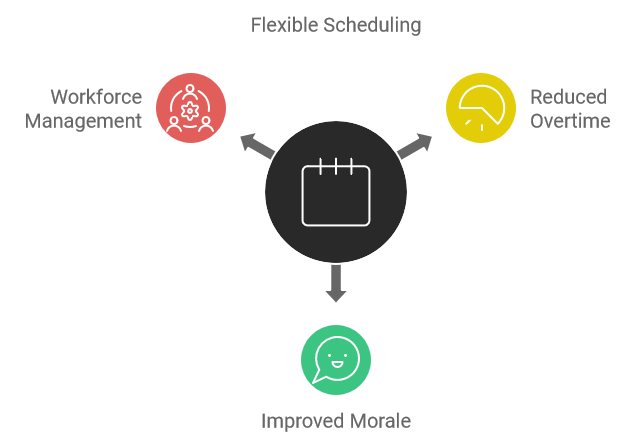
One of the most effective ways to reduce overtime and labor costs in call centers is by implementing flexible scheduling. This helps to spread the workload evenly across the workforce and helps to eliminate unnecessary overtime.
Flexible scheduling can also improve employee morale. Studies show that employees who have control over their schedules are 12% more likely to stay with their current employer. By offering options like staggered shifts, part-time schedules, and remote work, you can better manage your workforce and reduce overtime costs.
Pro Tip
Use employee scheduling software to predict call volumes and adjust shifts accordingly.
2. Optimize Workforce Management Practices to Reduce Labor Cost
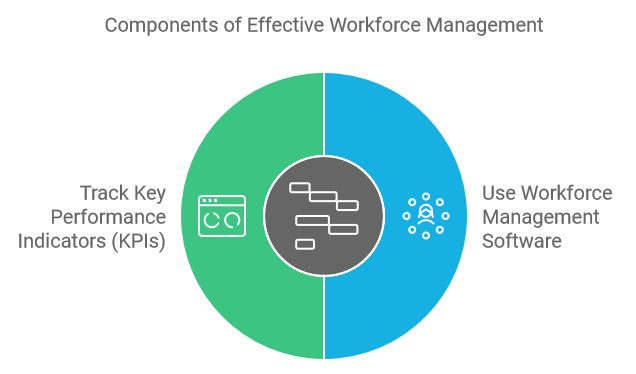
Effective workforce management is essential for reducing overtime and labor costs in call centers. It involves planning, scheduling, and tracking employee performance to ensure optimal productivity.
Use Workforce Management Software
Workforce management software can help you automate several processes, including scheduling, forecasting, and tracking performance. This not only saves time but also minimizes errors that can lead to increased labor costs.
Track Key Performance Indicators (KPIs)
Tracking KPIs such as average handle time, first-call resolution, and customer satisfaction can help identify inefficiencies in your operations. By addressing these inefficiencies, you can improve productivity and reduce the need for overtime.
Pro Tip
Regularly review performance data and adjust workloads accordingly to ensure that no single employee is overwhelmed, which can lead to burnout and excessive overtime.
3. Invest in Technology to Reduce Overtime Hours
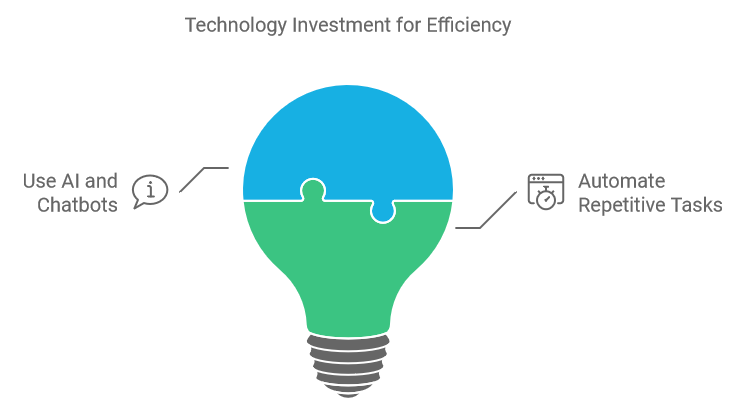
Investing in technology can dramatically reduce labor costs and minimize the need for overtime by automating mundane tasks and improving overall efficiency.
Use AI and Chatbots
AI and chatbots can handle routine queries and issues effectively, freeing up your human agents to focus on more complex issues. This not only reduces workload but also enhances customer satisfaction.
Automate Repetitive Tasks
Automating repetitive tasks such as data entry, call routing, and other administrative duties can save a significant amount of time and reduce labor costs. This allows staff to concentrate on higher-value tasks.
Pro Tip
Integrate different tools like CRM, workforce management, and performance tracking to streamline operations and reduce redundancies.
4. Improve Employee Engagement
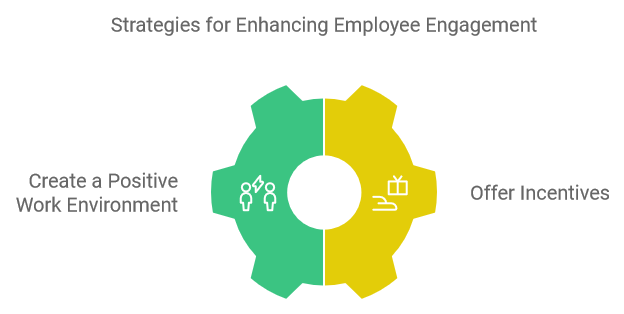
Engaged employees are generally more productive, less likely to take sick leaves, and more loyal to your company—all of which help reduce labor costs and overtime.
Create a Positive Work Environment
Creating a positive work environment can make a significant difference in employee engagement. Simple gestures like acknowledging achievements, offering development opportunities, and fostering a collaborative atmosphere can go a long way.
Offer Incentives
Offering incentives for good performance can motivate employees to work more efficiently. This can include bonuses, extra time off, or other rewards that contribute to an enhanced sense of job satisfaction.
Pro Tip
Conduct regular surveys to understand what motivates your employees and tailor your engagement strategies accordingly.
5. Monitor & Analyze Overtime Data
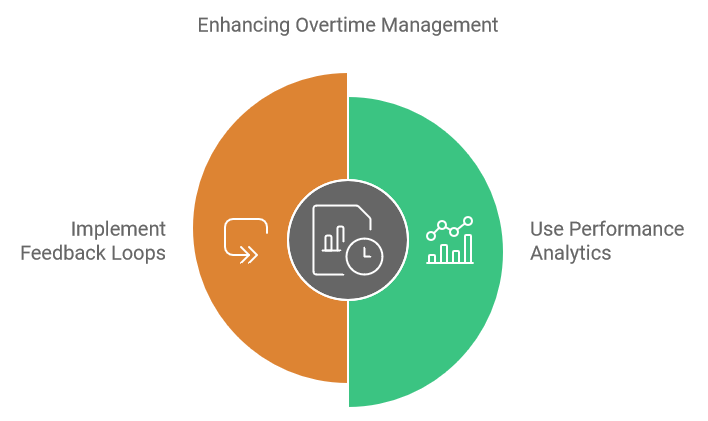
Monitoring and analyzing overtime data can provide insights into operational inefficiencies and areas where overtime can be reduced.
Use Performance Analytics
Performance analytics tools can help track metrics like call volume, handling time, and employee performance, giving you a clear picture of where improvements can be made.
Implement Feedback Loops
Implementing feedback loops where employees can provide input about workflows and processes can uncover hidden inefficiencies and opportunities for improvement.
Pro Tip
Regularly review your analytics and feedback to implement real-time improvements, keeping your operations lean and efficient.
6. Evaluate and Adjust Compensation Models to Manage Overtime Cost

Evaluating and adjusting your compensation models can help align employee incentives with business goals, reducing unnecessary labor costs.
Performance-Based Compensation
Performance-based compensation models incentivize employees to be more productive without relying on overtime. This could include commissions, bonuses, or salary adjustments based on performance metrics.
Flexible Compensation Plans
Flexible compensation plans such as allowing employees to choose between different benefits packages can improve job satisfaction and reduce turnover, indirectly reducing labor costs.
Pro Tip
Regularly review compensation structures to ensure they are competitive and aligned with your business goals.
7. Optimize Hiring Processes
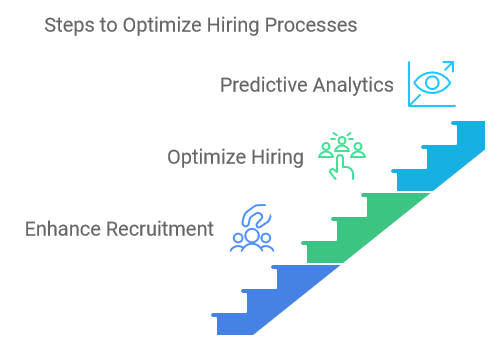
Optimizing your hiring process can help you bring in more qualified candidates, thereby reducing training time and the need for overtime.
Enhance Recruitment Strategies
Enhancing your recruitment strategies to attract top talent can help fill positions quickly and efficiently, reducing gaps that lead to overtime.
Use Predictive Analytics
Using predictive analytics can help identify the best candidates for your call center, reducing the likelihood of high turnover and the associated costs.
Pro Tip
Consider employee referrals as they often lead to high-quality hires who are more likely to stay longer at the job.
8. Streamline Processes and Workflows to Reduce the Need for Overtime
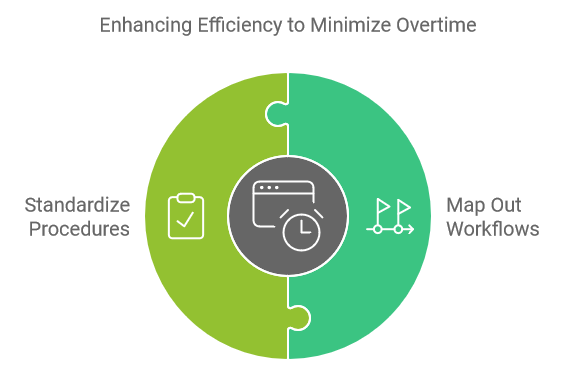
Streamlining processes and workflows can drastically reduce the time employees spend on tasks, thus reducing the need for overtime.
Map Out Workflows
Mapping out workflows to identify bottlenecks and inefficiencies can help you streamline operations, making it easier to get tasks done quickly and accurately.
Standardize Procedures
Standardizing procedures ensures that everyone knows the best way to handle tasks, reducing the time spent on them and the likelihood of errors.
Pro Tip
Use process mapping tools to visualize workflows and identify areas for improvement. This can help you make informed decisions on streamlining operations.
Conclusion:
Reducing overtime and labor costs in call centers is not only about cutting expenses but also about creating a more sustainable and efficient work environment. By implementing flexible scheduling, investing in technology, and continuously training your employees, you can achieve a balance that benefits both the organization and its workforce.
Remember, the key is to continuously evaluate and adjust your strategies based on performance data and employee feedback. This proactive approach will help you stay ahead in an ever-changing business landscape, ensuring both profitability and employee satisfaction.

